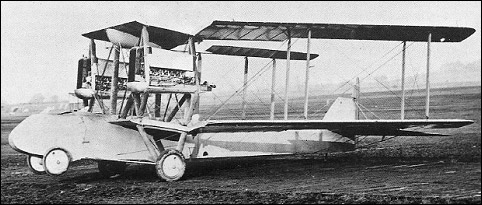| Terrence I. Murphy, e-mail, 09.02.2012 23:55 The Airco D.H.3, Capt. Geoffrey de Havilland's third design for the Aircraft Manufacturing Co. Ltd., which appeared in 1916, was a large two bay biplane capable of bombing German industrial centers. Contrasting in every way with his previous small pusher fighters, but owing something to the Royal Aircraft Factory's F.E.4, in the early design of which Capt. De Havilland had collaborated, the D.H.3 was equipped with two 120 h.p. Beardmore water-cooled engines in nacelles between the mainplanes. The long, slender, wire braced Warren girder fuselage was built of spruce, covered with plywood at the forward end and carried low to the ground on a wide track, short legged undercarriage. A pair of bumper wheels was provided under the nose. The four bladed, nine foot diameter pusher airscrews were carried clear of the mainplane trailing edges by short extension shafts and the D.H.3 was also the first aeroplane to feature the graceful curving rudder which was to become characteristic of almost every future de Havilland design. reply |











